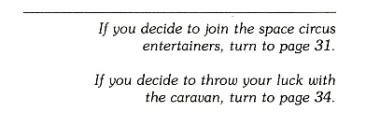When reading the materials for class this week, I began to ask myself “what sort of teacher am I”? Now, this isn’t a question I’ve ever sat and reflected upon before. I struggled to related the writings of Sarah Deel, Seymour Papert, and Shelli Fowler to my personal teaching persona because I never considered myself to have much experience teaching. By that, I mean I haven’t done much “traditional” teaching. The only “traditional” course I’ve ever taught was a wines course just this past fall, and even then I wasn’t the main instructor. During my master’s program I taught the odd lecture or seminars (related to extension activities) vs. regularly scheduled courses in a classroom. Additionally, I managed a lab where I taught undergraduate lab workers how to perform all lab activities and testing.
I guess I have yet to find my “teaching voice”. I do recognize that my “non-traditional” experiences are valuable, and there is much I can learn about myself from them. In fact, reflecting upon them has shed some light onto qualities I possess that will define my future teaching self. I think these qualities are best summed up by the fitting acronym E.L.I.Z.A.B.E.T.H. (aka my first name).

Earnest– I’m not distracted by things unrelated to my goals. If my goal is to educated my students, you can guarantee it’ll happen.
Laudable– This applies not to myself, but how I respond to those I teach. I’m great at providing feedback, and praise those who show they are making progress and/or an effort.
Imperfect– I will never claim to be perfect, so I don’t expect my students to be perfect either. I readily admit when I make mistakes or don’t understand something, and would like for my students to feel comfortable doing the same.
Zealous– I’m very enthusiastic and passionate about food science. That passion shines though when I’m instructing, and hopefully will inspire my students to take interest in the subject.
Attentive– I put a lot of thought and attention into everything I do, which I like to think will translate into the attention I will give to helping my students learn.
Bold– Fearless and daring. That’s how I’ve been in pursuit of an education and that’s how I want my students to be in my class. I want them to step out of their comfort zone, and take on challenges to better themselves.
Empowered– The support I’ve had from several key educators throughout my career has given me the confidence to succeed academically. I will strive to help my students feel empowered so they will have the opportunity to achieve their full potential just as I have.
Tenacious– To achieve your goals, academic or otherwise, you have to be tenacious. I have always exhibited determination in pursuit of my academic goals, even when faced with adversity. I hope my experiences enable me to relate to my students’ struggles, and assist me in helping them overcome any adversity they may face.
Harmonious– Years of life in academia have taught me one thing: you need to have balance in your life or you’re going to be miserable and never succeed. I want my teaching to be harmonious, offering options that balance the needs of my students with the goals of the course. I want them to feel they are learning something valuable from my teaching just as I hope I can learn something valuable from them. If mutual learning is happening, I’ll consider my teaching voice to be in perfect sync.


 Now, do I believe the “Choose Your Own [Learning] Adventure” method will result in the success of every student? Absolutely not. Similar to the Choose Your Own Adventure books, not all learning paths lead to a “happy ending”. There is always risk involved when one assumes responsibility for their own outcomes. The path to learning is riddled with unforeseen pitfalls and booby traps that can fell many an adventurer. Still, I think such a method is an intriguing alternative that may provide [student] adventurers with the opportunity to actively engage in the learning experience. However, there will always exist a select group of adventurers who prefer to have a “guide” outline their path for them.
Now, do I believe the “Choose Your Own [Learning] Adventure” method will result in the success of every student? Absolutely not. Similar to the Choose Your Own Adventure books, not all learning paths lead to a “happy ending”. There is always risk involved when one assumes responsibility for their own outcomes. The path to learning is riddled with unforeseen pitfalls and booby traps that can fell many an adventurer. Still, I think such a method is an intriguing alternative that may provide [student] adventurers with the opportunity to actively engage in the learning experience. However, there will always exist a select group of adventurers who prefer to have a “guide” outline their path for them.



 The public university I chose was my alma mater
The public university I chose was my alma mater